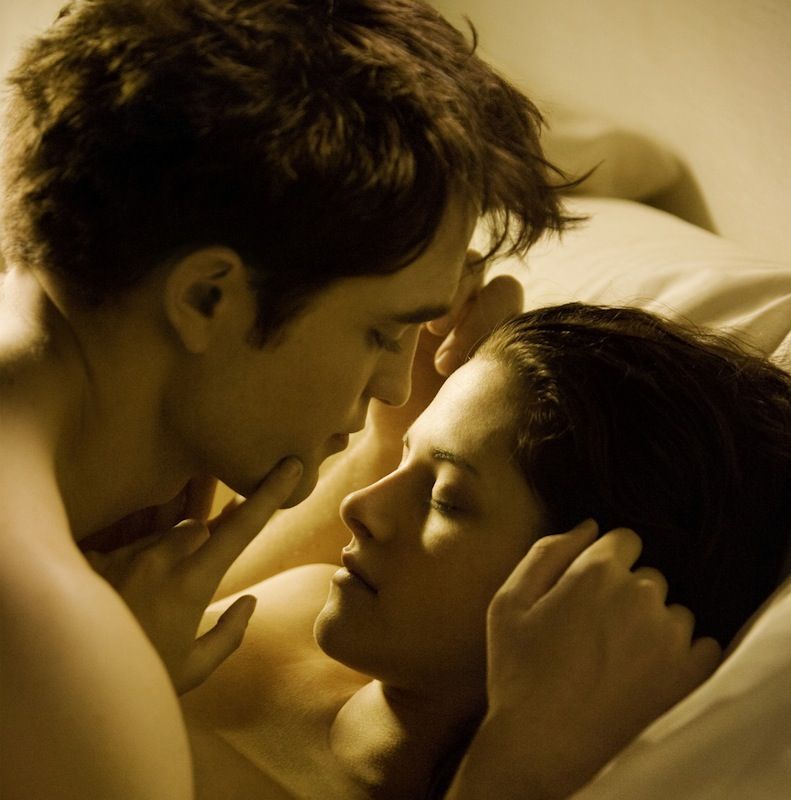'Twilight' Stands In For Religion for Some Teens

"Twilight" and other supernatural tales may give some non-religious teens a place to grapple with the big questions of life, according to a Danish researcher.
In Denmark, where religion is not a large part of daily life, teens seem to use media — often, American media — to explore questions of good and evil, life after death and destiny, Line Nybro Petersen of the University of Copenhagen's film and media studies department has found. The communal experiences of hardcore fans of the series can even echo religious communities.
"Being a 'Twilight' fan allows the teenagers to engage in very intense emotional experiences," Petersen told LiveScience. "You can almost get the sense that these are transcendental emotions, the feeling that you are part of something bigger than yourself in a semireligious way." [8 Ways Religion Impacts Your Life]
Vampires and spirituality
Vampires may seem an odd icon in which to find spiritual experiences, but "Twilight," "True Blood" and other supernatural series are part of a well-worn process of film and media turning old ideas into new stories. Media studies researchers call this process "mediatization."
For example, religious symbols such as the cross and holy water show up frequently in the TV show "Buffy the Vampire Slayer," but they're largely stripped of their Christian. Instead, they're simply weapons against vampires with little mention of theology.
Vampires undergo a similar transformation in "Twilight." Instead of evaporating when they step into the sun, for example, they sparkle — a more effective convention for a romantic hero compared with turning into a pile of dust. [Famous Fangs: 10 Tales of Famous Vampires]
Sign up for the Live Science daily newsletter now
Get the world’s most fascinating discoveries delivered straight to your inbox.
As part of her doctoral dissertation, Petersen surveyed and interviewed Danish teens with an interest in supernatural TV shows or movies, from "Twilight" to "Ghost Whisperer," in which Jennifer Love Hewitt portrays a woman who can communicate with the dead. She found that while many of these teens rejected organized religion, they still grappled with the big questions of life.
"You don't have any clear answer to what happens [when you die], so perhaps when you read different things and watch different movies, then it gives you something," Katja, a young "Twilight" fan, or "fanpire," as these teens called themselves, told Petersen. "Perhaps not a clear answer, but more like, 'Oh, it happens like this,' and then you can choose to believe it."
Petersen reported these interviews in the journal Mediatization and Religion: Nordic Perspectives in 2012.
Supernatural stories
"Twilight" fandom became a big part of the lives of the fans Petersen interviewed, with one estimating she thought or talked about the books and movies for half of her day every day. Some teens met friends through "Twilight" websites and fan boards, building a community of mostly young girls entranced by the romance of the books' main characters, mortal girl Bella and vampire Edward.
As a result, Petersen said, the books and movies could act as a big part of the teens' identities, with fandom becoming something to "wear on your sleeve." Observing crowds at "Twilight" movies, Petersen noticed an insider-friendly atmosphere, complete with clapping at beloved scenes and humming along with the movie's soundtrack.
American fans, or "Twihards," as they've been dubbed, respond to the movie in similar ways. The semireligious aspect of fandom might be slightly different in America, where religious faith is more common, Petersen said. She found that religious Danish teens loved supernatural narratives as much as less religious teens, but they tended to see the films through the prism of their religion. One teen girl, for example, told Petersen that the show "Ghost Whisperer" fit perfectly with her Christian worldview.
It's hard to say whether intense fandom has any effect as the teens mature into adulthood, but the semireligious fervor generally fades, Petersen found. Many of the 13- to 18-year-olds she researched came to "Twilight" from "Lord of the Rings" or the Harry Potter series, and then moved on to "The Hunger Games" trilogy or other supernatural stories. In other words, teens take what they need from a story and then move on to other tales.
"It's something they can deal with for a brief period of time in their life and then they can move on," Petersen said, adding that teens' tastes should be taken seriously: "It's important to understand how media use can become a resource for thinking about the world."
You can follow LiveScience senior writer Stephanie Pappas on Twitter @sipappas. Follow LiveScience for the latest in science news and discoveries on Twitter @livescience and on Facebook.

Stephanie Pappas is a contributing writer for Live Science, covering topics ranging from geoscience to archaeology to the human brain and behavior. She was previously a senior writer for Live Science but is now a freelancer based in Denver, Colorado, and regularly contributes to Scientific American and The Monitor, the monthly magazine of the American Psychological Association. Stephanie received a bachelor's degree in psychology from the University of South Carolina and a graduate certificate in science communication from the University of California, Santa Cruz.









